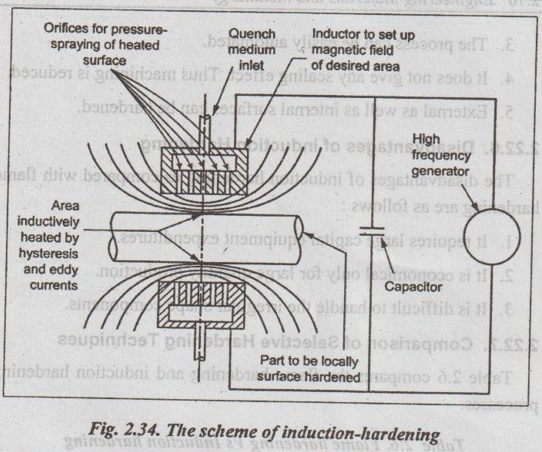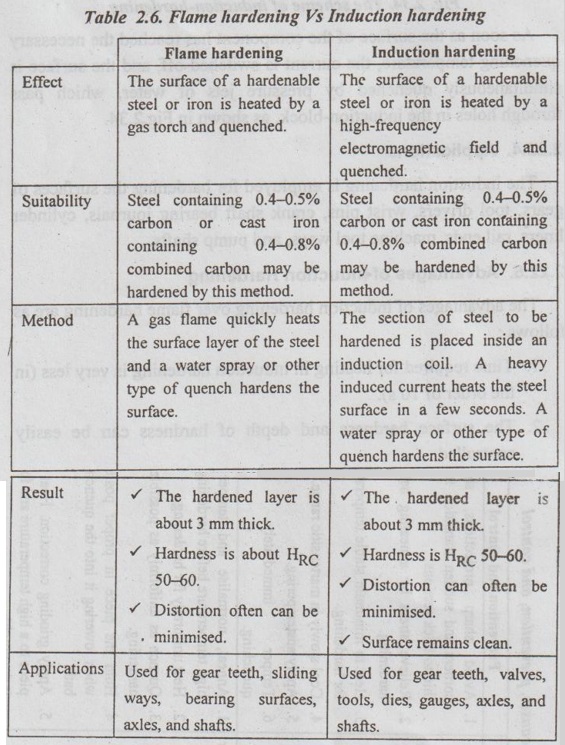The mechanism and purpose of induction hardening are the same as for flame hardening.
INDUCTION HARDENING
1. What is Induction Hardening?
✓ The mechanism and purpose of induction hardening are the same as for flame hardening. The main difference is that in induction hardening the source of heat input is an induced electric current instead of using flame.
✓ In other words, the induction hardening is a process of selective hardening using resistance to induced eddy currents as the source of heat.
2. Suitability
The steels that can be hardened with this process are the same as those used in flame hardening.
3. Procedure
Induction heating is done by passing a high-frequency alternating current through a water-cooled coil or inductor around the workpiece. The cyclic magnetic field that is generated induces alternating currents. that heat the workpiece, as shown in Fig.2.34.
The depth to which heating occurs varies inversely as the square root of the frequency, so that the higher the frequency used, the shallower the depth of heating. Typical frequencies used are: 3000 Hz for depths of 3 to 6 mm; and 9600 Hz for depths of 2 to 3 mm.

As soon as the surface of the component has reached the necessary quenching temperature, the current is switched off, and the surface is siderabred simultaneously quenched by pressure jets of water, which pass through holes in the induction-block, as shown in Fig.2.34.
4. Applications
The induction hardening is employed for hardening the surfaces of gears, tool drivers, wrist pins, crank shaft bearing journals, cylinder liners, rail ends, machine tool ways, and pump shafts.
5. Advantages of induction Hardening
The advantages of induction hardening over flame hardening are as follows:
1. Time required for heating in induction hardening is very less (in the order of 10 s).
2. The surface hardness and depth of hardness can be easily controlled.
3. The process can be easily automated.
4. It does not give any scaling effect. Thus machining is reduced.
5. External as well as internal surfaces can be hardened.
6. Disadvantages of Induction Hardening
The disadvantages of induction hardening as compared with flame hardening are as follows:
1. It requires large capital equipment expenditures.
2. It is economical only for large quantity production.
3. It is difficult to handle the irregular shape components.
7. Comparison of Selective Hardening Techniques
Table 2.6 compares the flame hardening and induction hardening processes.

No comments:
Post a Comment